Valerie Rodriguez
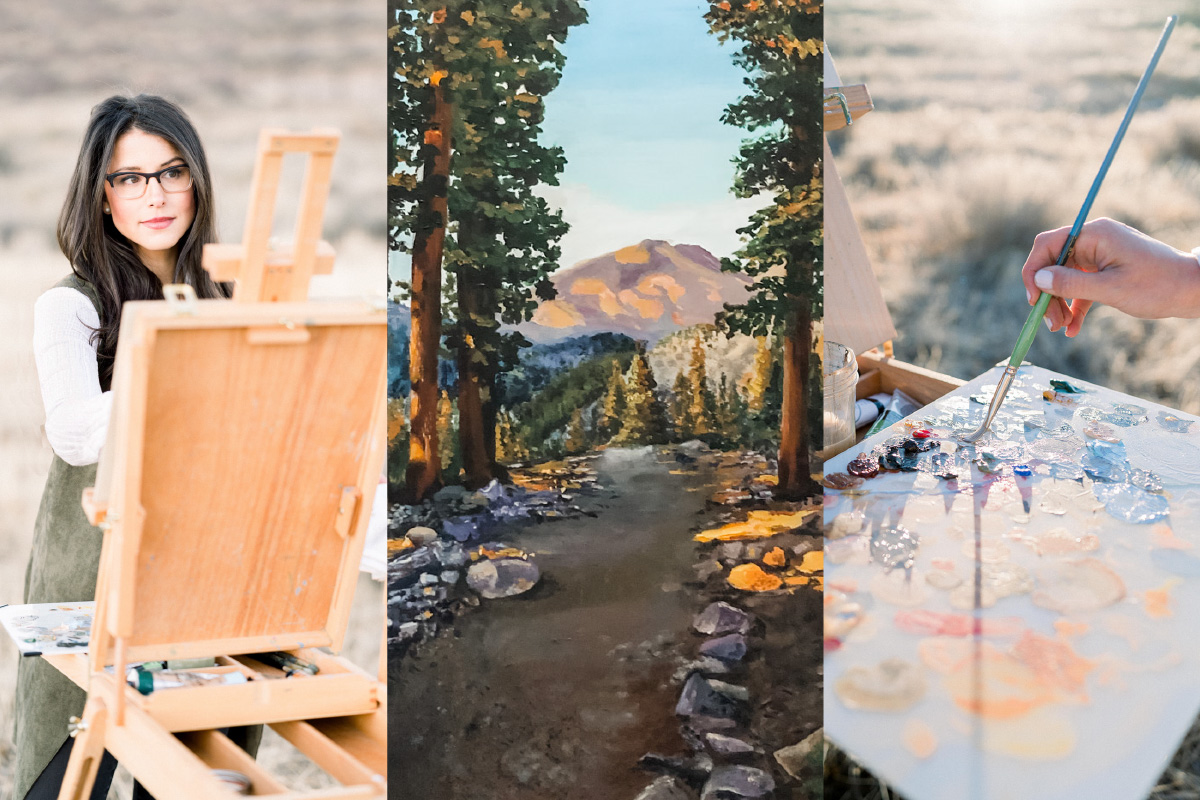
Valerie Rodriguez
Painter
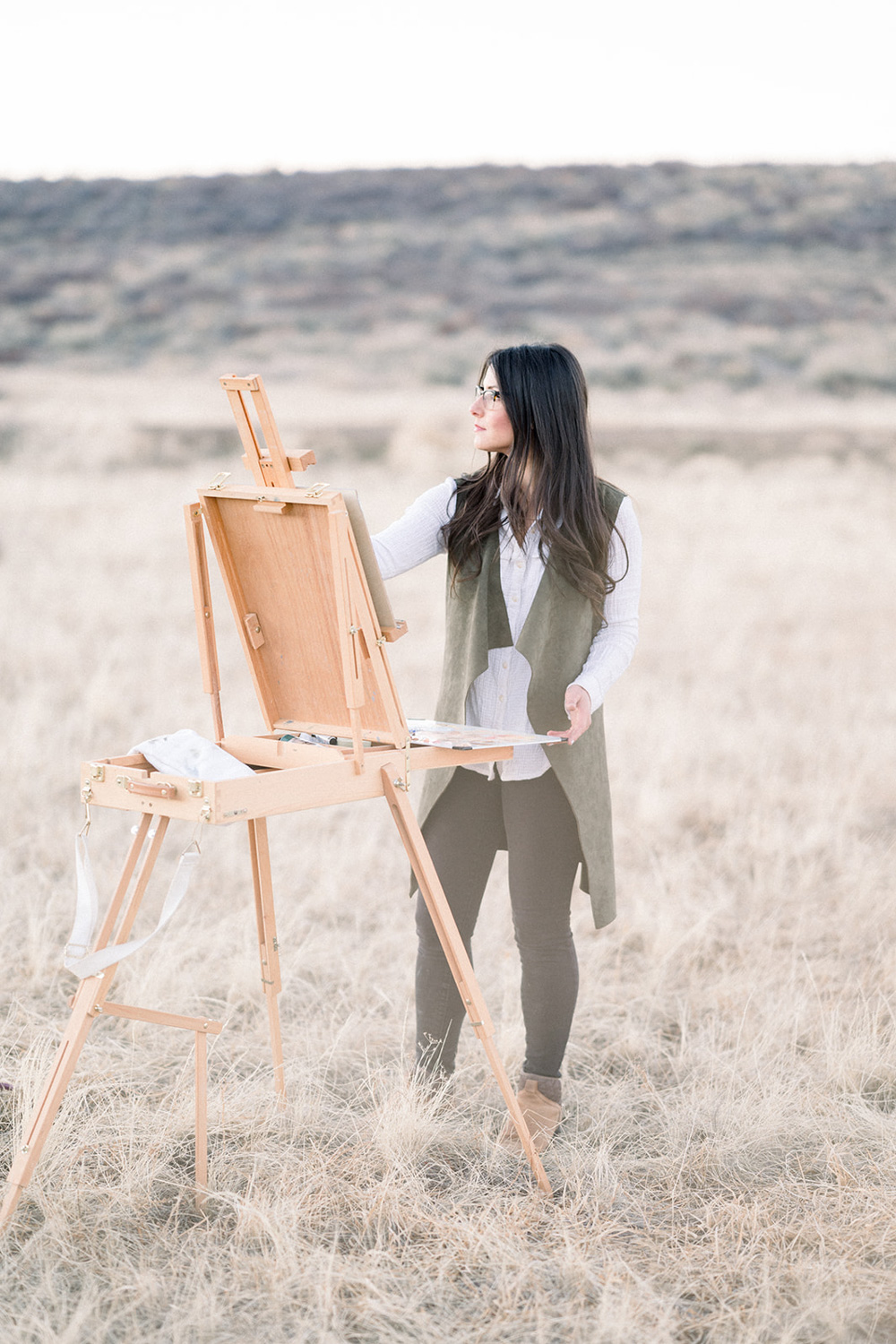
Valerie in her element, with her easel set up outside to paint en plein air — photo by Farr Photo
Valerie Rodriguez is a painter who calls the mountain town of Truckee, California home. Her proximity to mountains feel important when introducing her, because if Valerie’s not painting en plein air with an easel set up near a river or brush-filled valley, she’s probably incorporating natural elements into the background of a portrait or commission she’s working on.
We were first drawn to Valerie’s “Female Explorers” series that celebrates curiosity by depicting figures setting forth into landscapes, turned away with eyes to a horizon or pair of binoculars. But more recently, Valerie has begun turning her subjects toward us. This revolution represents a shift in her work over time, partly in response to her own changing interests and needs.
No matter what is in the foreground, we were interested to know more about how Valerie honors places and people through her painting process, and what she’s seeing ahead on the horizon for herself.
Meet Valerie:
You say the thread that ties all your “Female Explorer” pieces together is curiosity. What exactly does that mean to you? And collectively, how do you feel these ‘figures’ embody that?
Curiosity is a major theme in my work, both in my “Female Explorer” paintings and in each of my other collections. It’s a complex concept in my opinion—it goes further than just having an inquisitive mind. Curiosity lives in all of us when we’re young; we find wonder in shadows, the feel of sand slipping through our fingers, the bursts of different flavors when we taste them for the first time.
Curiosity can be ignited, but it can also be suppressed by the slightest threat to our basic human needs. I believe it’s a liberty that many take for granted. My art aims to awaken it in those who may have lost it along the way and to celebrate it in those who have been able to hang onto it despite the challenges to do so.
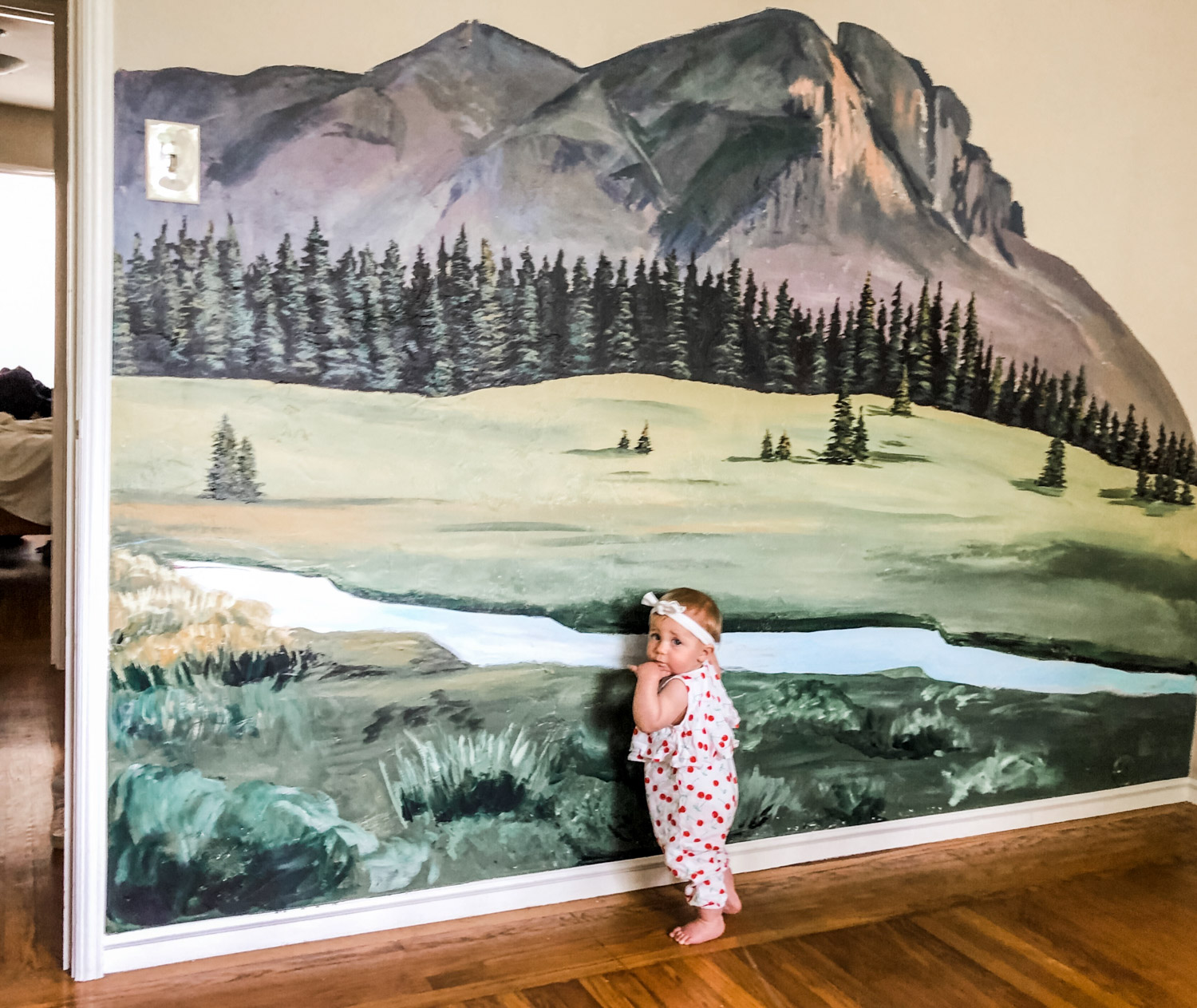
Valerie painted this beautiful mural for her niece, to inspire a future explorer.
Like exploring the outdoors, curiosity is the main prerequisite in becoming an artist. Art is about asking questions through color and form, and exploring different answers to those questions through action.
What’s important for you in the distinction of also acting on curiosity—and our abilities to do so?
I see an enormous gap between inquisition and feeling secure enough to explore it. To me, this all comes down to safety and access: access to the outdoors, to books, to art supplies, to clothes and equipment that fit every body type, to safety both physically and emotionally. The people who face obstacles and discouragement in these areas are often the ones who need the healing quality of nature the most.
Everyone has a responsibility to help bridge that gap and instill confidence in those underrepresented in the outdoors and in art. There are a lot of people already taking big, impactful action in this space and I think representation in art can play a role as well.
Art has a way of shouting HEY, YOU ARE BEAUTIFUL, and that’s a message everyone needs to hear.
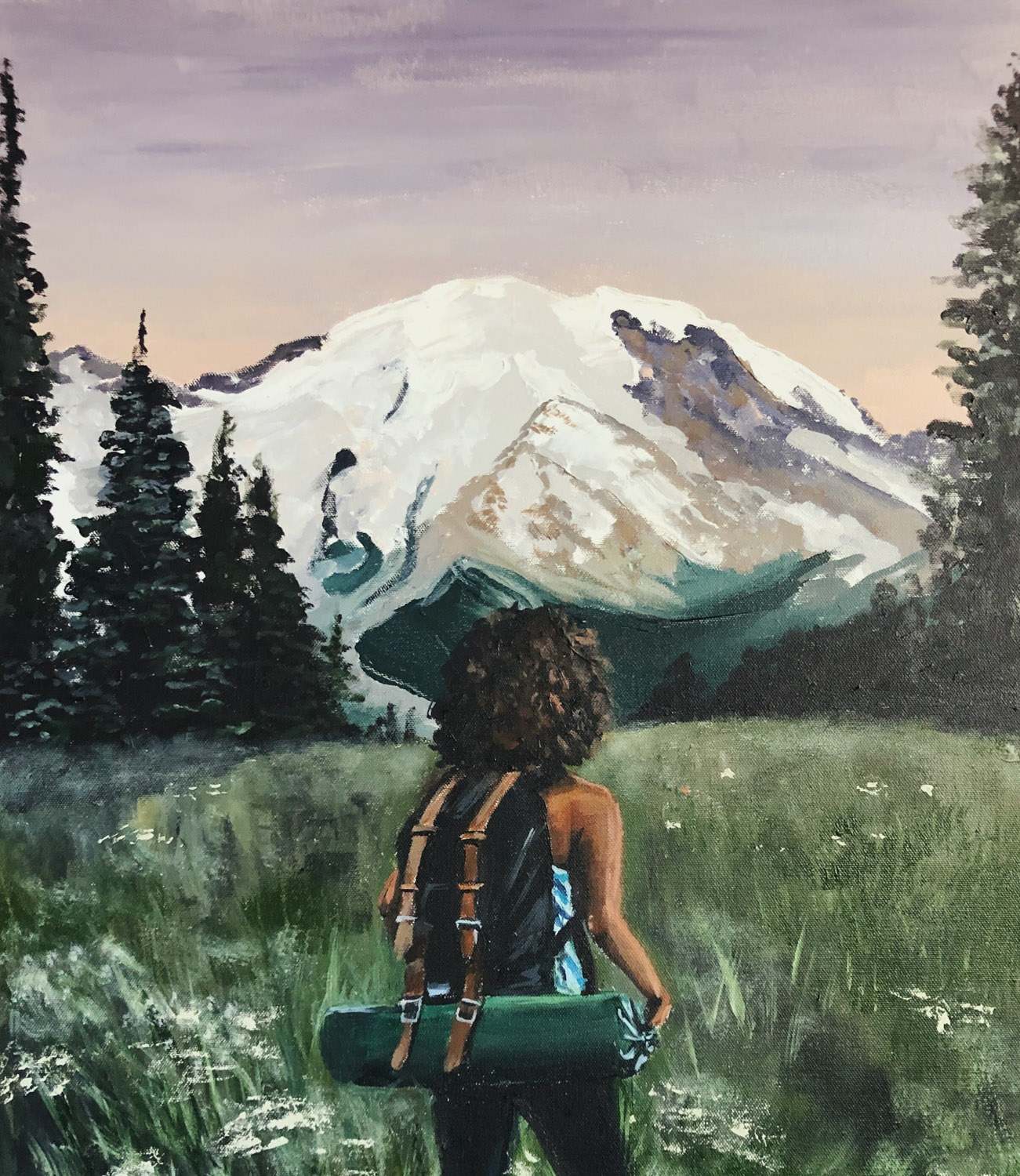
Tell us about your process of painting as a way to honor places. What do you learn and keep in mind while translating a peak or valley into color and form?
The work of an artist is to take what she sees and translate that observation through emotion and perspective. In order to acquire this perspective and lend emotion, I believe it’s important to learn the history of my subject—to let myself ask questions like:
- How did this feature come to be?
- Who walked these trails before me?
- How is this landscape changing?
Living in Truckee, a rural town outside of Lake Tahoe, the history of this area is ever-present. Many have heard of the Donner party who met their fate in these mountains, but there’s so much more to learn and I’m really just scratching the surface. There are the Maidu, Washo, and Miwok tribes who lived and cared for this land for thousands of years, and the settlers who moved west in search of gold. There’s the immeasurable contribution by Chinese laborers in building the Central Pacific Railroad, and the industries throughout California that were forged because of this. There are the avalanches that have claimed lives and the search & rescue teams that have saved them. All this to say, you need a high level of respect to faithfully paint plein air.
It’s a very humbling experience to set up my easel at the base of a mountain or bank of a river that has given so many people so much, and we owe it to these lands to record them from a place of humility and honor.
How does this look different (or not) in your portraiture process?
I’m just getting into portraiture, but I’ve begun to approach it the same way. I recently finished a portrait of a woman tilting her face toward the sunlight, hair wrapped in purple velvet. I listened to the audiobook of The Warmth of Other Suns by Isabel Wilkerson while I was painting this piece, and it influenced my use of rich colors and overall tone. I wanted to interpret the ambition of the Great Migration, captured by this line by Richard Wright, from which the book gets its name:
“I was leaving the South
to fling myself into the unknown . . .
I was taking a part of the South
to transplant in alien soil,
to see if it could grow differently,
if it could drink of new and cool rains,
bend in strange winds,
respond to the warmth of other suns
and, perhaps, to bloom”
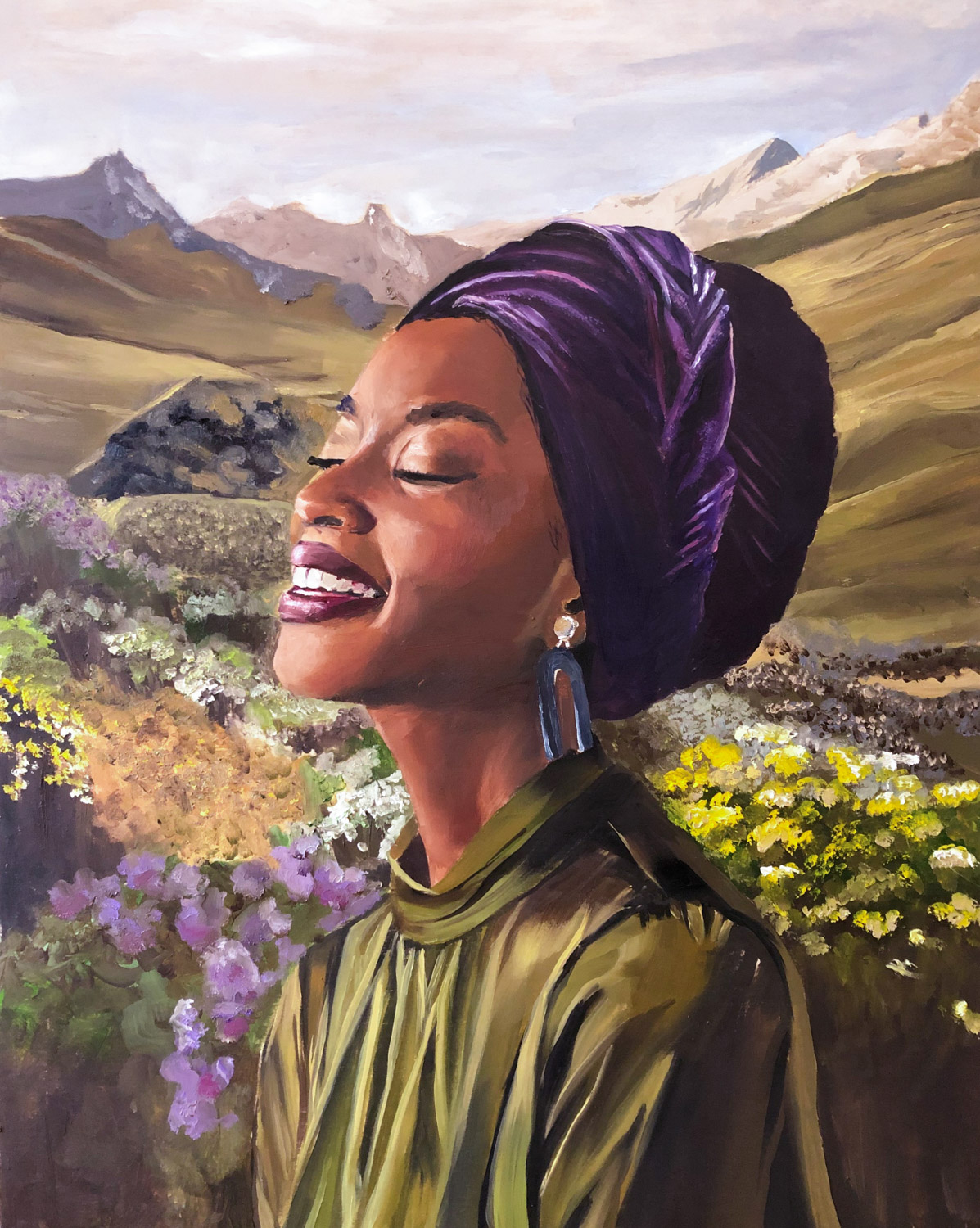
How has your painting style evolved over time? What are you more drawn to now that’s pulling you in different directions?
Thanks for asking this! I think sometimes you don’t see the directions your journey has taken you until you’re asked to stop and think about it. My work has been rooted in nature from the beginning; like so many, nature grounds me. Even when I introduced figures into my work, the focus of each piece was still on the healing nature of the landscape, the figures were just taking it in.
Since the pandemic began, there’s been a shift in my work from focus on the landscape to the woman in the foreground. I’ve begun to include faces to convey emotion and I’m sure that’s due to the shift in my needs: rather than the outdoors, what I’ve been craving most lately is personal connection.
I now wonder if this has also affected the positive manner in which my portrait work has been received this year—if my community has also been craving this connection, and therefore are more affected by it. It’s an interesting thought.
Regardless of changing styles and seasons of life, what kind of legacy do you hope your art leaves?
I hope my work inspires others to slow down and stay present. To make time for more things that leave you grateful, and to seek out moments that make you feel both on top of the world, and small in comparison.
- A commissioned landscape painting.
- Another from the explorer series.
Artwork photos courtesy of Valerie Rodriguez. Portraits of Valerie are by Farr Photo.
Learn more about Valerie at ValerieStyleArt.com and see more on their Instagram, @valeriestyle_art.






Be the first to comment